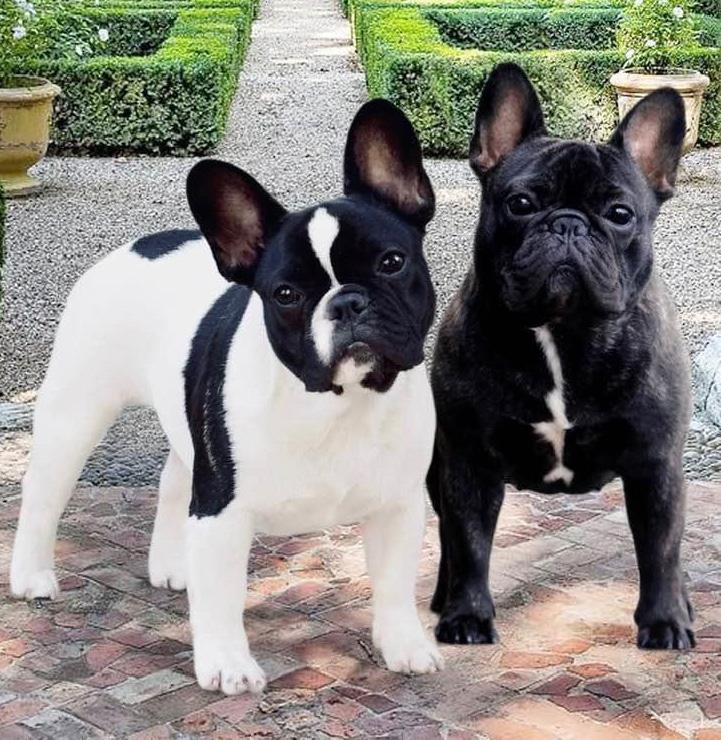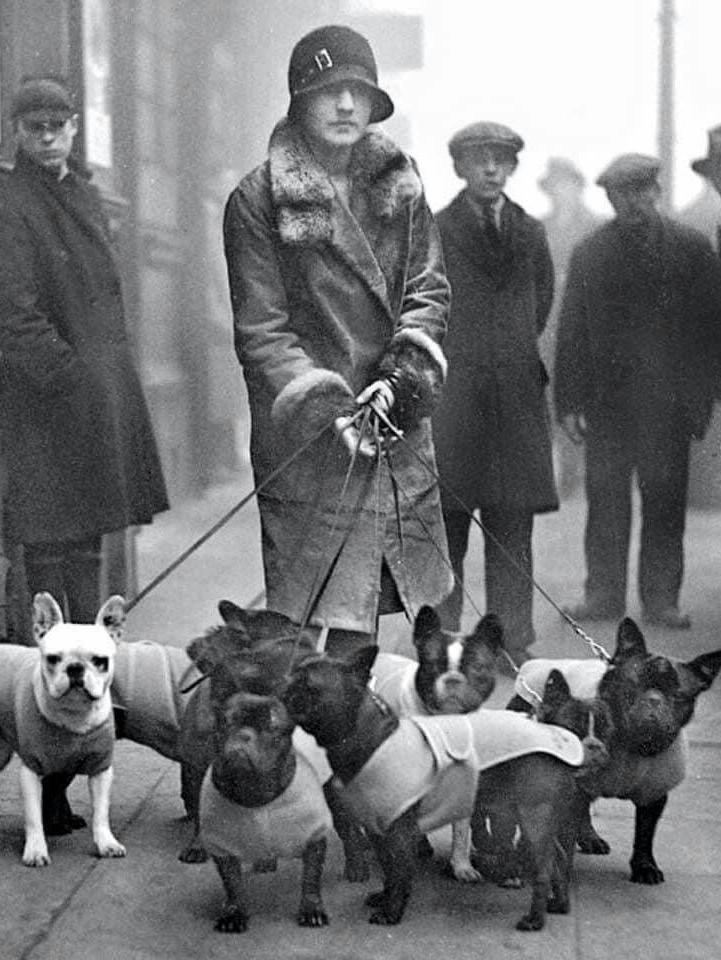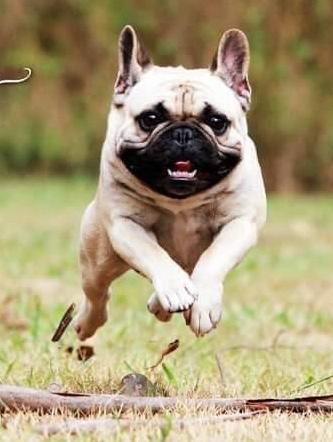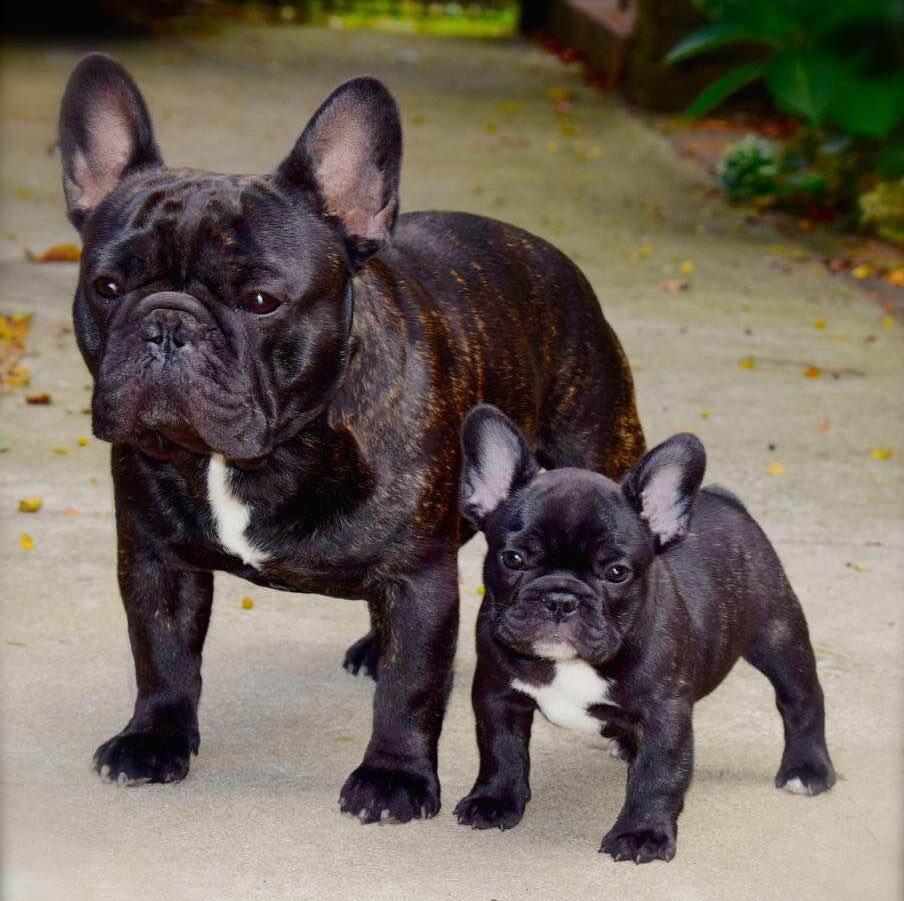
4 minute read
Breed Feature – French Bulldog
FRENCH BULLDOG
There are varied explanations about the French Bulldog’s origin. Some speculate that artwork and skeletal finds of the Bulldog known as Chincha in ancient Peru closely resemble the French Bulldog. Others have suggested the Spanish Bulldog featured in the creation of the French Bulldog.
Most agree it is probable that today’s French Bulldog originated from the toy Bulldogs brought to France by the lace workers from Nottingham in England, following the Industrial Revolution. These miniature Bulldogs are thought to have been crossed with Terriers and Pugs and thus the French Bulldog evolved.
Quickly the French Bulldogs became popular among Parisian women and then became a status symbol of French society including artists, businessmen and aristocrats owning Frenchies. Toulouse Lautrec and Degas painted pictures that included French Bulldogs and French author, Colette wrote stories about her beloved Frenchies. Wealthy Americans visiting Paris also fell victim to the charms of the Frenchie and took them home to America. In historical paintings and photos, the French Bulldog subjects are often seen wearing very fancy handmade artisan leather collars with a big rough around them that was made from real badger fur.
The French Bulldog is one of only a few breeds which owes its existence to the efforts of breeders in different countries – France, America, England and Germany. Certainly the continuance of the unique bat ears at the turn of the century was due to America and there was immense popularity for the Frenchie in America from a century ago and which has continued for at least 30 years.
Currently the French Bulldog is experiencing a popularity never seen before in the history of the breed and appears in the top 10 breeds list in the UK, America, Europe and here in Australia.
TEMPERAMENT AND SUITABILITY
The comical and affectionate Frenchie is a charmer. Unlike breeds that were originally developed for jobs like hunting, herding, tracking or guarding, the Frenchie’s purpose today is exactly what it was when it was first bred – to be a friendly, happy companion for humans. Whilst small in stature, their vibrant and “clown like” personality gives them the heart of a larger dog breed and this makes the Frenchie a fun breed to live with.
The French Bulldog is somewhat dependent upon human companionship and it’s not recommended that they be left alone for long periods time. They get on well with other animals and enjoy making new friends of the human variety. They happily adapt to life with singles, couples, or families and do not require excessive amounts of exercise. The Frenchie enjoys a daily walk of short to moderate length. In summer, this walk should be taken in the cool of the early morning or the late evening – NEVER in the heat of the day.
APPEARANCE AND COLOUR
The French Bulldog should be sturdy, compact and well muscled in body with a short smooth coat. Being a brachycephalic breed, the Frenchie has short face and snub nose sitting inside a square head frame. An essential feature of the breed is the hallmark “bat” erect ear carriage. Equally important are his round, dark eyes.

Coat colours can vary and can be brindle, fawn or pied. There can also be quite a variation in the brindle colour from an almost solid black colour to quite striped – commonly referred to as a tiger brindle.
MAINTENANCE AND HEALTH
The French Bulldog’s short, easy care coat sheds minimally and can be easily maintained with weekly brushing using a medium-bristle brush, to remove shed hair and keep him looking his best. Brushing promotes new hair growth and distributes skin oils throughout the coat to help keep it healthy.
A Frenchie’s ears and facial folds should be kept clean and dry. The Frenchie’s nails should be trimmed regularly, as overly long nails can cause him pain.

The French Bulldog is generally a fairly sound dog, rarely suffering from heart, eye, skin problems or epilepsy. However, the combination of the brachycephalic head, short body and screw tail increases the potential for hemivertebrae and breathing difficulties. This includes Brachycephalic Airway Syndrome and Hemivertebrae.
Back problems are also not uncommon in the older Frenchie, from five to six years of age. A spine and hip grading scheme is in place for the French Bulldog and is a highly recommended breeding practice for all breeders in Australia.
LIFE SPAN
The life expectancy of the French Bulldog is 10-14 years, however most frenchies tend slow to up in their later years of life – usually after the age of 7 years old.
FRENCH BULLDOG OF QUEENSLAND
The Club’s mission is to “support the

It has a strong, committed membership and each year members and Frenchie lovers are welcome to participate in family focused, Frenchie friendly, social events that are coordinated by the club. These events are aimed at bringing the greater breed community together with a day of fun activities for all Frenchies and their owners alike.
Acknowledgements: French Bulldog Club of NSW, Liz Davidson, French Bulldog Club of England, KCT Formosa French Bulldog Club, James Dalton, Bruce Chang.

FOR MORE INFORMATION:
Contact Kelly McClelland (Secretary) by email at secretaryfbcqld@gmail.com for more information. Alternatively, visit us at https://www.qldfrenchbulldogclub.com/ or on Facebook at https://www.facebook.com/ FrenchBulldogClubOfQld









